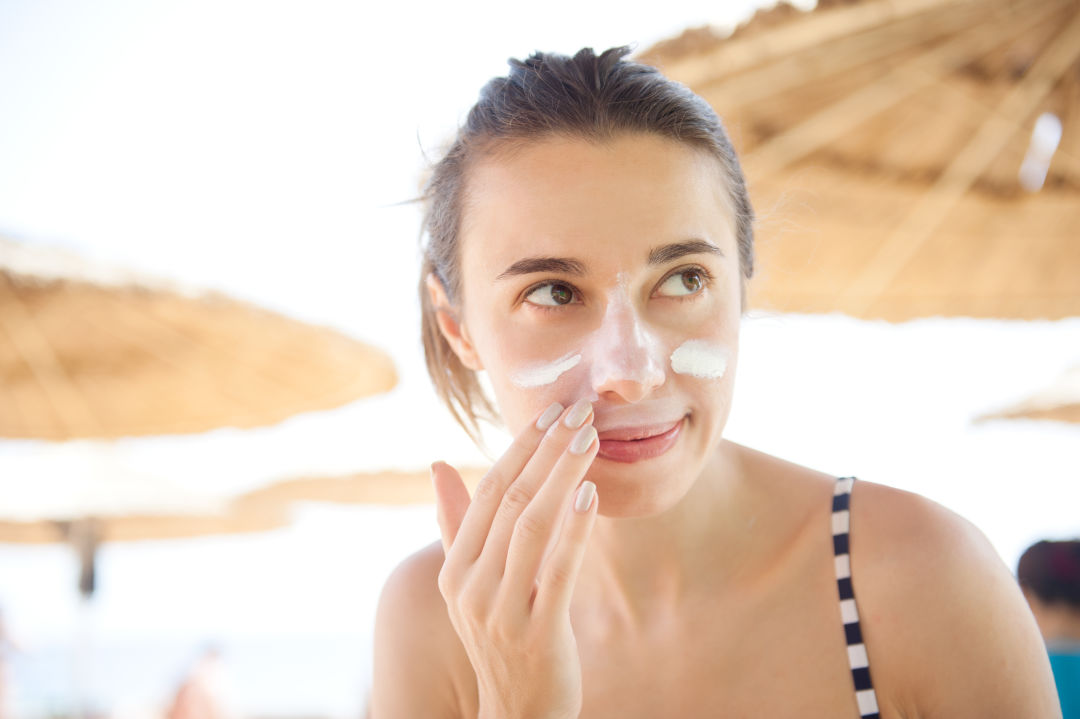How to Keep Your Skin Safe from the Summer Sun

Image: Courtesy of Freepik
Summer is coming, which means hours spent outdoors and beckoning sunny skies. But before you go out to soak up the rays, make sure to include sunscreen on your list of outdoor essentials, even before your phone and sunglasses.
We’ve all felt the scorching pain of a nasty sunburn, but the sun can cause serious damage. Not only does sun exposure cause visible signs of aging like hyperpigmentation—dark patches on your skin—and wrinkles, skin damage is also accumulative, which means that spring break sunburn you got in college will affect your skin for years to come. Furthermore, over 5 million cases of skin cancer get diagnosed each year, making it the most common type of cancer in the U.S.
May is Skin Cancer Awareness Month, and board-certified dermatologist, Dr. DiAnne Davis of Westlake Dermatology, hopes to bring awareness to the most preventable form of cancer through tips and sunscreen recommendations that will keep your skin sun safe.
Tips
Get Your Skin Checked Yearly
Monthly self-exams are great, but Davis suggests having your skin checked at least once per year by a board-certified dermatologist. “If patients have a history of melanoma, non-melanoma skin cancer, or a mole that is under observation, then I recommend having more frequent follow-up appointments with their dermatologist.”
Apply More Sunscreen
No one likes to feel slimy or sticky after applying sunscreen, but according to Davis, most of us are not applying nearly enough to protect ourselves. “People typically apply between 25-50 percent of the recommended amount of sunscreen,” she says. “I always tell my patients that for a day in the sun, a ‘full body’ application requires about eight teaspoons of sunscreen, or enough to fill a shot glass.”
Which is Better? Chemical vs. Physical
Not surprisingly, Davis believes the best type of sunscreen is the kind you wear on a daily and consistent basis. Aside from that, you should choose your sunscreen based on your skin type and outdoor activity.
There are two common types of sunscreens: physical and chemical. Physical sunscreens are absorbed into the skin and scatter the sun’s UV rays. Chemical sunscreens sit on top of the skin to filter out UVA and UVB rays. “Chemical sunscreens with common ingredients like oxybenzone or octinoxate [which act as UV filters] are usually thinner in consistency and spread easily on the skin,” Davis says. “There is no white or gray residue after application. For a chemical sunscreen, I recommend applying 20 minutes before going outside.”
On the other hand, “Physical sunscreens contain minerals, including zinc oxide and titanium dioxide. They sit on top of the skin and work immediately to deflect UV rays before penetrating the skin,” Davis says. If you are going to be sweating or coming in contact with water, you will need to apply physical sunscreen into your skin very well, because it may rub off more easily.
Which is Better? Spray-on vs. Lotion
It might be easier to whip out the spray-on sunscreen, especially for kids, but it might not always give you the best protection. The FDA continues to evaluate the safety and effectiveness of spray sunscreens, and Davis warns it is difficult to know if you have used enough sunscreen to cover all sun-exposed areas of the body, which may result in inadequate coverage. When using spray sunscreen, make sure to spray an adequate amount on your hands first and then rub it in to ensure even coverage.
Sunscreen Recommendations for Every Age
Age 6 months-plus
- Aveeno Baby Continuous Protection Zinc Oxide Mineral, SPF 50
- Neutrogena Pure & Free Baby Sunscreen Lotion, SPF 50
- Blue Lizard Baby, Australian Sunscreen, SPF 30+
Ages 10–20
- EltaMD UV Clear, SPF 46
- CeraVe AM Facial Moisturizing Lotion, SPF 30
- Neutrogena Hydro Boost Water Gel Lotion, SPF 50
Ages 20–60
- ColoreScience Total Protection Sunforgettable Brush-On Shield, SPF 50
- ColoreScience Tint Du Soleil, SPF 30
- Alastin HydraTint Pro-Mineral Broad Spectrum Sunscreen, SPF 36




